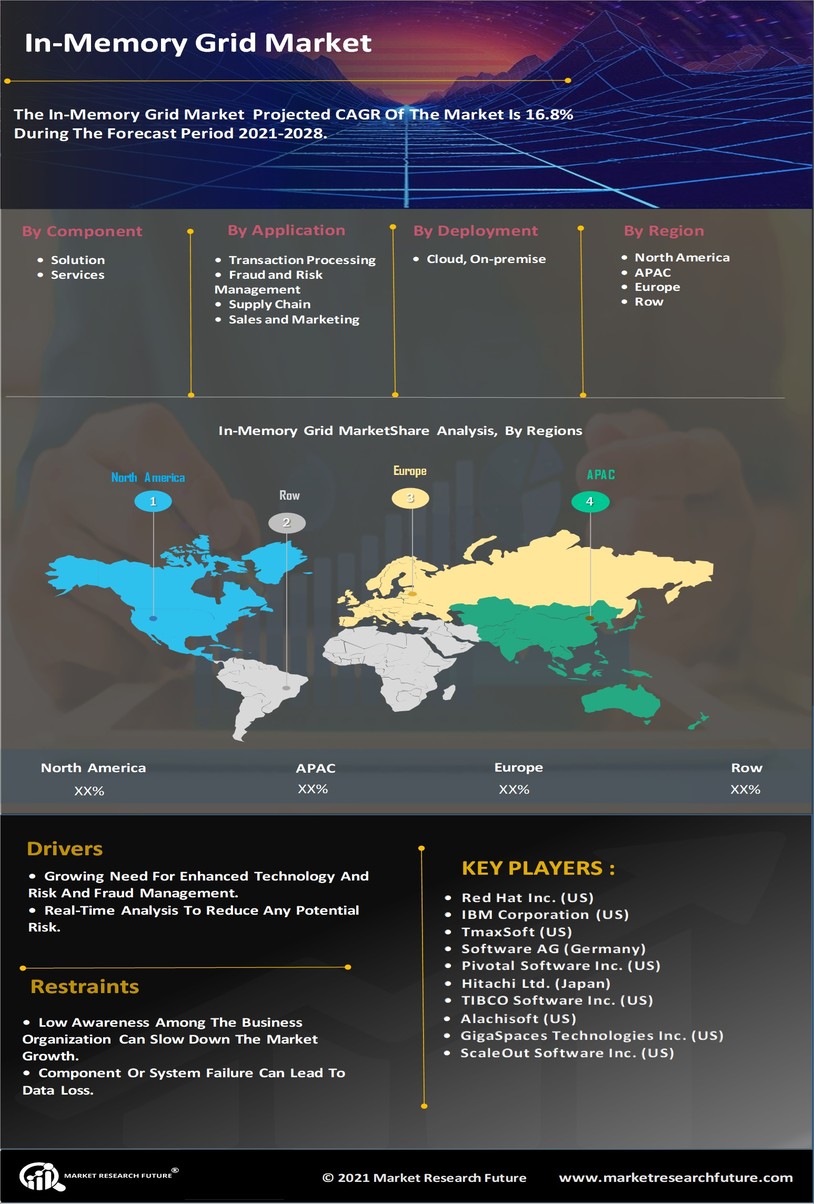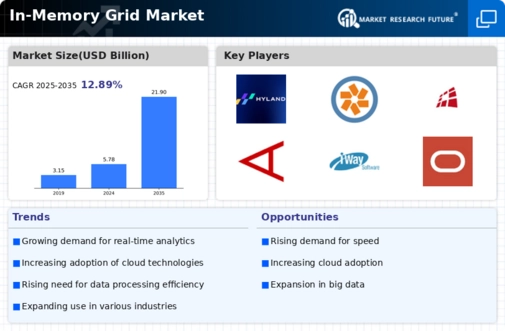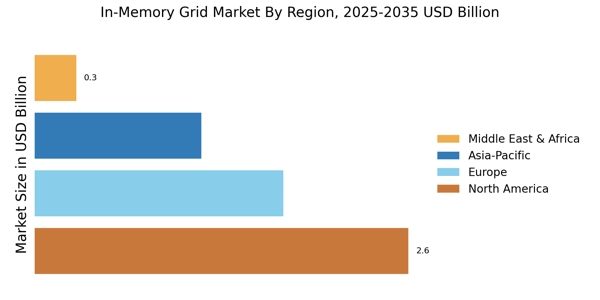Demand for Real-Time Data Processing
The In-Memory Grid Market is experiencing a surge in demand for real-time data processing capabilities. Organizations are increasingly recognizing the necessity of instant data access and analysis to make informed decisions. This trend is particularly evident in sectors such as finance, healthcare, and e-commerce, where timely insights can lead to competitive advantages. According to recent estimates, the market for real-time analytics is projected to grow significantly, with a compound annual growth rate (CAGR) of over 30% in the coming years. This growth is driving investments in in-memory grid technologies, as businesses seek to enhance their operational efficiency and responsiveness to market changes.
Increased Focus on Big Data Management
The In-Memory Grid Market is being propelled by the escalating need for effective big data management solutions. As organizations generate vast amounts of data, traditional storage and processing methods are proving inadequate. In-memory grids offer a solution by enabling faster data retrieval and processing, which is crucial for analytics and decision-making. The market for big data technologies is expected to reach several billion dollars, with in-memory grids playing a pivotal role in this transformation. Companies are increasingly adopting these technologies to streamline their data workflows and improve their analytical capabilities, thereby enhancing their overall business performance.
Need for Enhanced Application Performance
The In-Memory Grid Market is driven by the need for enhanced application performance across various sectors. Organizations are striving to improve the speed and efficiency of their applications to meet the demands of modern consumers. In-memory grids facilitate this by allowing applications to access data directly from memory, significantly reducing latency and improving response times. As businesses increasingly rely on data-intensive applications, the demand for in-memory grid solutions is expected to rise. This trend is likely to result in a robust growth trajectory for the in-memory grid market, as companies prioritize performance optimization in their technology investments.
Rising Adoption of Cloud Computing Solutions
The In-Memory Grid Market is benefiting from the rising adoption of cloud computing solutions. As businesses increasingly migrate their operations to the cloud, the demand for scalable and efficient data processing solutions is growing. In-memory grids are particularly advantageous in cloud environments, as they provide the necessary speed and flexibility to handle dynamic workloads. The cloud computing market is expected to continue its upward trajectory, with significant investments in infrastructure and services. This trend is likely to drive further adoption of in-memory grid technologies, as organizations seek to optimize their cloud-based applications and enhance their data processing capabilities.
Growth of Internet of Things (IoT) Applications
The proliferation of Internet of Things (IoT) applications is significantly influencing the In-Memory Grid Market. As IoT devices generate massive volumes of data in real-time, the need for efficient data processing and storage solutions becomes paramount. In-memory grids facilitate the rapid processing of this data, allowing organizations to derive actionable insights quickly. The IoT market is projected to expand dramatically, with billions of connected devices anticipated in the near future. This growth presents a substantial opportunity for in-memory grid technologies, as they are well-suited to handle the complexities and demands of IoT data management.


















Leave a Comment